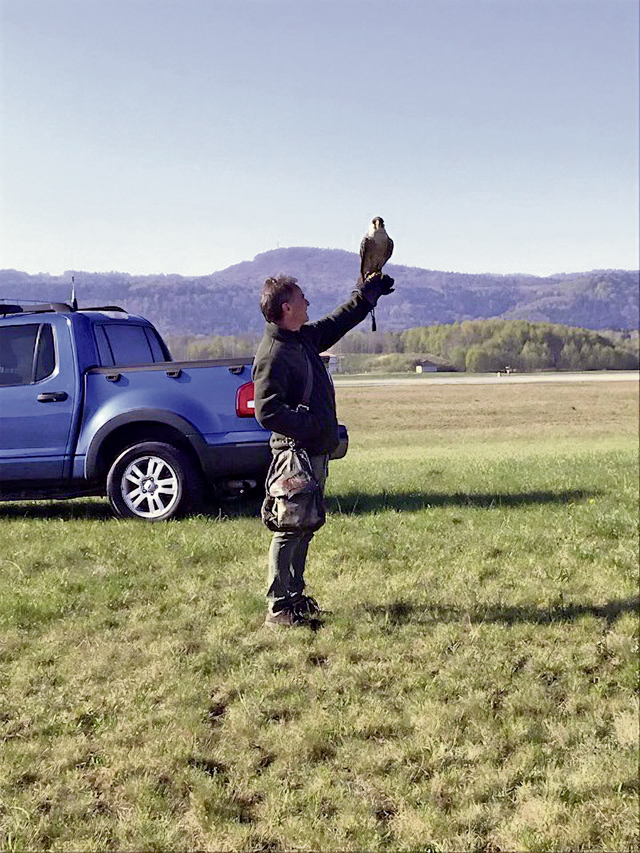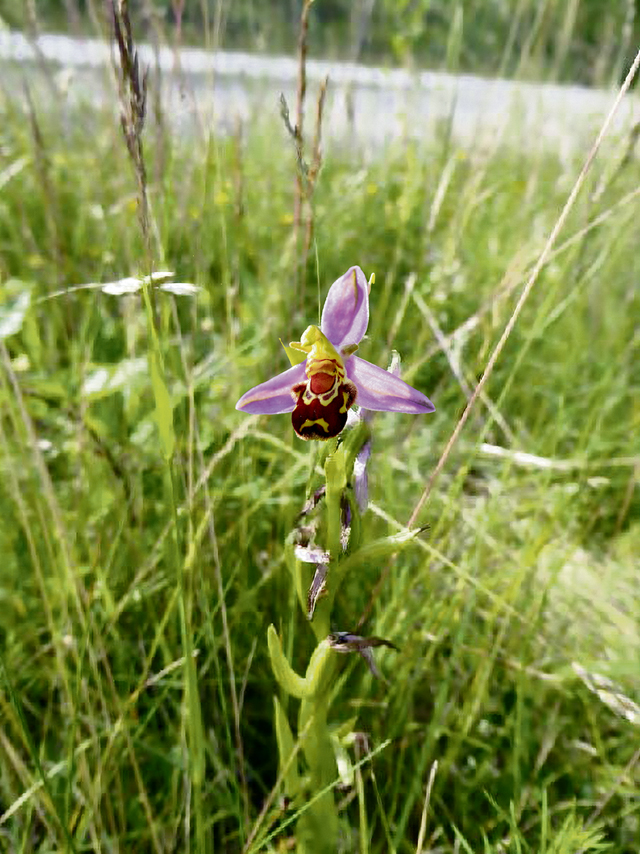
Ramstein Air Base is well-known for being the largest U.S. military installation in Europe. With the 86th Airlift Wing as host wing, two supporting wings, the Headquarters of the U.S. Air Forces in Europe — Air Forces Africa, NATO Allied Air Command Headquarters and its support units interacting to support and conduct airlift missions as the main hub in Europe. Its two runways and the surrounding areas need to be maintained, taking environmental aspects into consideration.
However, Ramstein is much more than a concrete jungle with spacious ramps areas, operational facilities on sealed surfaces, and aircraft hangars. It is also home to a number of natural dwellers that many may not be aware of. It is a valuable habitat for diverse plants, animals and insects lying amid the Palatinate Forest, Germany’s largest coherent forest area.
During the Paleolithic era, about 12,000 years ago, hunters and gatherers populated the region and a large swamp spanning from Ramstein to Homburg slowly formed more than 20 lakes and peat bogs throughout time. During construction of the base in the early 1950s, the impenetrable peat bog had to be drained in a large-scale landfill activity and railroads tracks were constructed to bring in soil and construction materials.
Based on the original ecological condition of the landscape, the area near the runways still contain several smaller ponds and streams. These ponds and streams are ideal for versatile species, including threatened or endangered animals and plants. There are over 100 hectares of wetlands and 250 hectares of forest on Ramstein Air Base.

Bats, reptiles, amphibians and insects find an ideal biotope to breed and prosper on Ramstein’s valuable national habitat. Taking a closer look, those interested will discover butterflies, grasshoppers, dragonflies and ground beetles along with over 115 types of plants, such as bee orchid, lousewort and maiden pink. A family of rabbits might scurry over the ground. Endangered marsh frogs have been heard quacking and a very rare resting bird, the greater short-toed lark was detected May 4 ,2022.
Due to the rarity of the species, the lark detection is to be considered an exceptional occurrence. The greater short-toed lark inhabits dry, treeless, and shrub-less open landscapes such as dry grasslands and semi-deserts as well as fallow land and barren areas in cultivated landscapes. The species’ range includes large parts of the southern Palearctic from northwest Africa and Spain to China. In Western and Central Europe, the northernmost breeding occurrences are in central France and Hungary. The observation could be the first record of this species in Rhineland-Palatinate. Also, a high population with approximately 150 breeding pairs of the common skylark has recently been discovered on the premises.
A falconer is regularly at the runway to deter birds, particularly during the migration season, to maintain aircraft safety. In July 2021, the first and so far, unique detection of a wildcat was achieved via wildcams in the southwest of the base. Hunters are permitted to keep larger animals clear of the runways and taxi ways to ensure ground safety and avoid collisions.
Due to a large number of construction projects in the last three decades more than 30 percent of the original trees had to be cut. Finding an equilibrium between operational requirements and environmental aspects is a diligent task. The U.S. Air Force is required to comply fully with German environmental laws as the land itself remains property of the German government.
Reforestation measures were carried out after construction of the northern runway to provide shade and shelter for mammals and birds, as well as sight protection from the autobahn. Additionally, large efforts have been made to create leisure spots for the community such as the pond near the Southside Chapel. It has become a popular recreation spot with picnic tables while a running track on the former railway line was constructed for joggers. It might just be fun to take a walk around the base with colorful red and yellow leaves during fall, maybe discovering a squirrel bunkering nuts for winter. Onlookers may experience fog lifting from the wetlands near the West Gate on a misty fall morning.
The Kaiserslautern Military Community draws all of its drinking water from 15 deep wells several hundred feet below ground. Water is pumped from the wells, treated and then distributed within the community. To keep drinking water clean, the local environmental teams monitor more than 1,000 groundwater wells along on Ramstein Air Base.
The 86th Civil Engineer Environmental Office engages in close ties with various German agencies such as the Federal and State Forest Departments and the Upper and Lower Environmental Authorities in Rheinland-Pfalz to maintain a balance between wildlife and operational needs. In addition, mission requirements, logistics and daily tasks need to be taken into consideration. This is where the Environmental Office acts as a liaison between U.S. military organizations and German environmental agencies.
The office is also instrumental in planning and organizing annual Earth Day events, which take place in April. Activities such as tree planting events, building bat houses, educational activities for children, and visiting the water treatment plant are scheduled next spring. In addition, the office is developing a nature walking path and preparing for the 20-year anniversary of the opening and re-naturalization of Mehlinger Heide, an area near Sembach, once used for military maneuvers.
A group of 25 trainees and their instructors from the Federal Forest Department visited Ramstein in October to strengthen ties, enhance communication and for a better overall understanding of Ramstein’s biome. First the students received a briefing and an overview of the installation and its diverse biotopes. The group then had a chance to discuss issues, ask questions and familiarize themselves in a casual get-together at lunch.
The group then set out to a tour of the base to view base facilities such as the housing area, schools, operational buildings, dormitories and a glimpse of the runways. It also used the opportunity to visit valuable biotopes such as the southern part of the air base, areas including special sites with high biotope or habitat value for rare or endangered species of flora and fauna and forestry areas throughout the base.
The tour was rounded off with the chance to climb on board a U.S. C-130J Super Hercules aircraft. Members of the 86th Aircraft Maintenance Squadron hosted the guests and explained features of the aircraft, operational requirements and reported about their daily tasks as maintainers. The group was amazed by the complexity of the U.S. installation, not comparable to any other in their areas of responsibility and was truly impressed with the air base being such a diverse biotope with an abundance of wildlife.


